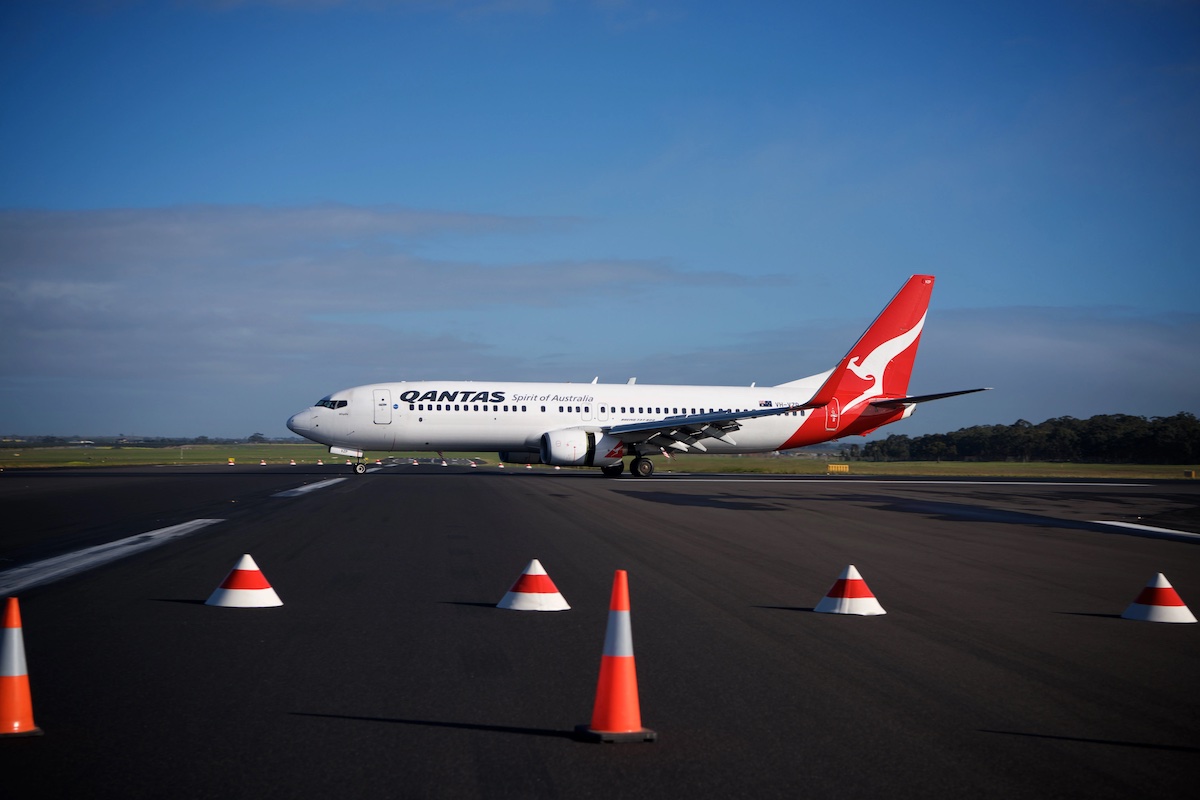Qantas Braces for Crowd Rush With Staff Bonuses, Schedule Cuts

Photo Credit: Melbourne Airport
The Covid-19 pandemic air travel recovery may have a hex on it. Flying is in disarray in Europe and the U.S. amid staffing shortages and industrial action, and Australia appears the next domino to fall with the country's largest airline, Qantas Airways, warning of the months ahead.
Qantas will boost ground staff numbers by 15 percent in July compared to levels during the Easter peak in preparation for crowds, it said on June 24. In addition, the airline is offering non-management staff a one-time A$5,000 ($3,456) bonus after a two-year wage freeze. The one-time payment are forecast to cost Qantas A$87 million.
The move that could ameliorate any staff misgivings come as Australia braces for a busy July. The Brisbane, Melbourne and Sydney airports — the country's three busiest — have both warned flyers of crowds, and advised them to travel with patience. The latter said on June 21 that it expects more passengers to pass through its terminals than in April during the Easter holidays. "We won’t sugar-coat the fact that the terminals will be busy during the school holidays, and there will be queues," Sydney Airport CEO Geoff Culbert said.
The situation is similar to what airports, and airlines, are seeing in both Europe and the U.S.: a tight labor market has made staffing back up from pandemic lows, especially for entry-level positions, difficult at best. Artificial caps on flights have been implemented at Amsterdam Schiphol and London's Gatwick and Heathrow airports to manage crowds, while crowds and chaos has been documented at other airports in both Europe and the U.S.
“My number one, two, and three problems right now are workforce, workforce, and workforce,” City of Phoenix Director of Aviation Services Chad Makovsky, who manages Phoenix Sky Harbor International Airport, said in May.
Qantas, like its peers in Europe and the U.S., is also cutting flights in what it hopes will help ease airport crowds. The airline will reduce its domestic Australia capacity by another 5 points, for a total of 15 percent off plan, in July and August. Capacity will be reduced a further 15 percent in September, and then by 10 percent in October though March 2023. The airline says the cuts will also help it recoup high oil prices.
Qantas will fly 99 percent of its 2019 domestic capacity in the September quarter, 106 percent in the December quarter, and 110 percent in the March 2023 quarter. Its fiscal year ends in June.
The carrier's international recovery remains unchanged. In fact, Qantas will add new thrice-weekly service between Perth and Johannesburg with an Airbus A330 on November 1. The new route will complement its existing nonstop between Sydney and Johannesburg, and takes advantage of changes in the market during the pandemic. South African Airways flew the Johannesburg-Perth route until 2020, according to Cirium schedules, but, after a difficult pandemic restructuring, has yet to resume any of its long-haul flying.
Virgin Australia, Qantas' largest competitor, also retrenched during the pandemic. This included exiting long-haul international routes to Asia and the U.S.
Since Australia lifted travel restrictions last year, Qantas has added new international destinations, including Delhi and Rome. It has also moved forward with long-planned Project Sunrise nonstops between Sydney and both London and New York. Qantas plans to fly 70 percent of 2019 international capacity by September, and 90 percent by next June.
Separately, Gareth Evans, CEO of Qantas Group subsidiary Jetstar Airways, will leave the airline at the end of December. Evans has been CEO of Jetstar since 2017, and with the group for 23 years. Qantas has not named a replacement.
Qantas maintained its outlook of a loss in the fiscal year ending June 30, and a profit for the coming year that ends in June 2023.
